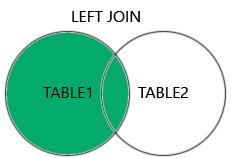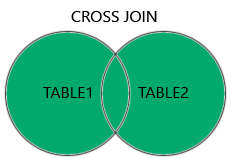# MySQL 基础语法
# create 创建数据库
建数据库基本语法:
create database [if not exists] database_name | |
[character set charset_name] | |
[collate collation_name]; | |
# 如果创建的 database_name 已存在,则执行会导致错误。添加 if not exists 可以避免 | |
# charset_name 可以指定字符集(?) | |
# collation_name 指定排列规则(?) |
# drop 删除数据库
使用普通用户登录 MySQL 服务器,需要特定的权限才可以删除或创建数据库.
删除数据库基本语法:
drop database [if exists] database_name; |
# use 选择数据库
选择数据库基础语法:
use database_name |
# 基本数据类型
数值类型
tinyint:1 字节.smallint:2 字节mediumint:3 字节int:4 字节bigint:8 字节float:4 字节,单精度浮点数double:8 字节,双进度浮点数decimal
日期和时间类型
字符串类型
char:varchar
# create 创建数据库表
创建数据库表基本语法:
create table table_name{ | |
coloumn1 datatype, | |
colomun2 datatype, | |
... | |
} | |
[character set charset_name] | |
[collate collation_name] | |
[engine=engine_name]; |
字段属性:
Primary key:主键auto_increment:自增,一般用于主键not null:非空,若输入的记录该字段为空,则会报错
# drop 删除数据库表
删除数据库表基本语法:
drop table [if exists] table_name; |
# alter 修改表
修改表结构基本语法
alter table table_name | |
add column_name datatype | |
drop column column_name | |
modify column column_name datatype |
# insert 插入数据
插入数据基本语法:
insert into table_name(column1, column2, ...) | |
values(values1, values2, ...) | |
[values(values1, values2, ...)]; |
如果主键为自增的列,可使用 NULL 占位符替代
# delete 删除数据
删除记录基本语法:
delete | |
from table_name | |
where condition; |
# select 查询数据
查询语句基本语法:
select column1, column2, ... | |
from table_name | |
[where condition] | |
[order by column_name [ASC | DESC]] | |
[limit number]; # 用于限制返回的行数 |
# wherer 子句
where 用法:
可用于
delete或update操作查询语句中你可以使用一个或者多个表,表之间使用逗号 **,** 分割,并使用 WHERE 语句来设定查询条件
可以在 WHERE 子句中指定任何条件
- 等于条件
= - 不能与条件
!=、<> - 大于条件
> - 大于等于条件
>= - 小于条件
< - 小于等于条件
<= - 组合条件
and、or - 模糊匹配
like innotnot inbetweenis nullis not null
- 等于条件
# update 更新
记录更新基本语法:
update table_name | |
set column1 = value1, column2 = value2 | |
where condition; |
# like 子句
模式串的语法:
%:表示零个或者多个字符_:表示一个字符
# union
union 用于连接两个或者两个以上的 select 语句的结果,组成一个集合(取出重复行);使用 union all 可以不去除重复的行
select column1, column2, ... | |
from table1 | |
where condition1 | |
union | |
select column1, column2, ... | |
from table2 | |
where condition2 | |
[order by column1, column2, ...]; |
# order by 语句
order by 默认升序排序
SELECT column1, column2, ... | |
FROM table_name | |
ORDER BY column1 [ASC | DESC], column2 [ASC | DESC], ...; # 可以使用数子替换列名(数字表示列的位置) |
- 可以使用
nulls first或nulls last来处理null值
# group by 分组
group by 语句是根据一个或多个列对结果集进行分组,在分组的列上我们可以使用 sum、count、avg 等函数,其基本语法:
select column1, aggregate_function(column2) | |
from table_name | |
where condition | |
group by column1 |
with rollup可以实现在分组统计数据基础上再进行相同的统计,例如:mysql> SELECT coalesce(name, '总数'), SUM(signin) as signin_count FROM employee_tbl GROUP BY name WITH ROLLUP;
+--------------------------+--------------+
| coalesce(name, '总数') | signin_count |
+--------------------------+--------------+
| 小丽 | 2 |
| 小明 | 7 |
| 小王 | 7 |
| 总数 | 16 |
+--------------------------+--------------+
4 rows in set (0.01 sec)
# having
having 作为 where 的补充功能, having 子句中可以使用聚集函数
# 连接
JOIN 按照功能大致分为如下几类:
inner join:内连接 / 等值连接,返回两个表中满足连接条件的匹配行![]()
select column1, column2, ...
from table1inner join table2 on table1.column_name = table2.column_name
left join:返回左表的所有行,并包括右表中匹配的行,如果右表中没有匹配的行,将使用null填充相应字段![]()
select column1, column2, ...
from table1left join table2 on table1.column_name = table2.column_name
right join:返回右表的所以行,并包含左表匹配的行,如果左表中没有匹配的行,将使用null填充相应字段![]()
select column1, column2, ...
from table1right join table2 on table1.column_name = table2.column_name
cross join:对两个表做一个笛卡尔积,最终返回的表的记录可能非常大![]()
SELECT olumn1, column2, ...
FROM table1CROSS JOIN table2;
slef join:自连接
# null 值的处理
在 MySQL 中 null 表示缺失或未知的数据,处理 null 值需要特别处理,在 MySQL 中, NULL 值与任何其它值的比较(即使是 NULL )永远返回 NULL ,即 NULL = NULL 返回 NULL
MySQL 中处理 NULL 值的常见注意事项和技巧
is nullis not null<=>:比较操作符(不同于 = 运算符),当比较的的两个值相等或者都为 NULL 时返回 true使用
coalesce函数替换null值,它接收多个参数,返回参数列表中第一个非null的值SELECT product_name, COALESCE(column1, column1, ..., 0) AS actual_quantity
FROM products;
使用
ifnull函数处理null,ifnull函数是coalesce的 MySQL 特定版本,它接受两个参数,如果第一个参数为 NULL,则返回第二个参数null排序,在使用order by子句进行排序时,null会默认排在最后。如果希望null排在前面,可以使用NULLS FIRSTSELECT product_name, price
FROM productsORDER BY price ASC NULLS FIRST;
聚合函数
count/sum/avg会忽略null值,如果希望将null视为 0,可以使用coalesce或ifnull
# exists
# any、all
# case
CASE | |
WHEN condition1 THEN result1 | |
WHEN condition2 THEN result2 | |
WHEN conditionN THEN resultN | |
ELSE result | |
END; |
例子:
SELECT OrderID, Quantity, | |
CASE | |
WHEN Quantity > 30 THEN 'The quantity is greater than 30' | |
WHEN Quantity = 30 THEN 'The quantity is 30' | |
ELSE 'The quantity is under 30' | |
END AS QuantityText | |
FROM OrderDetails; |
# 事务
# 索引
# 函数
# 参考文章
- [1] MySQL 教程 | 菜鸟教程 (runoob.com)
- [2] MySQL Tutorial (w3schools.com)




